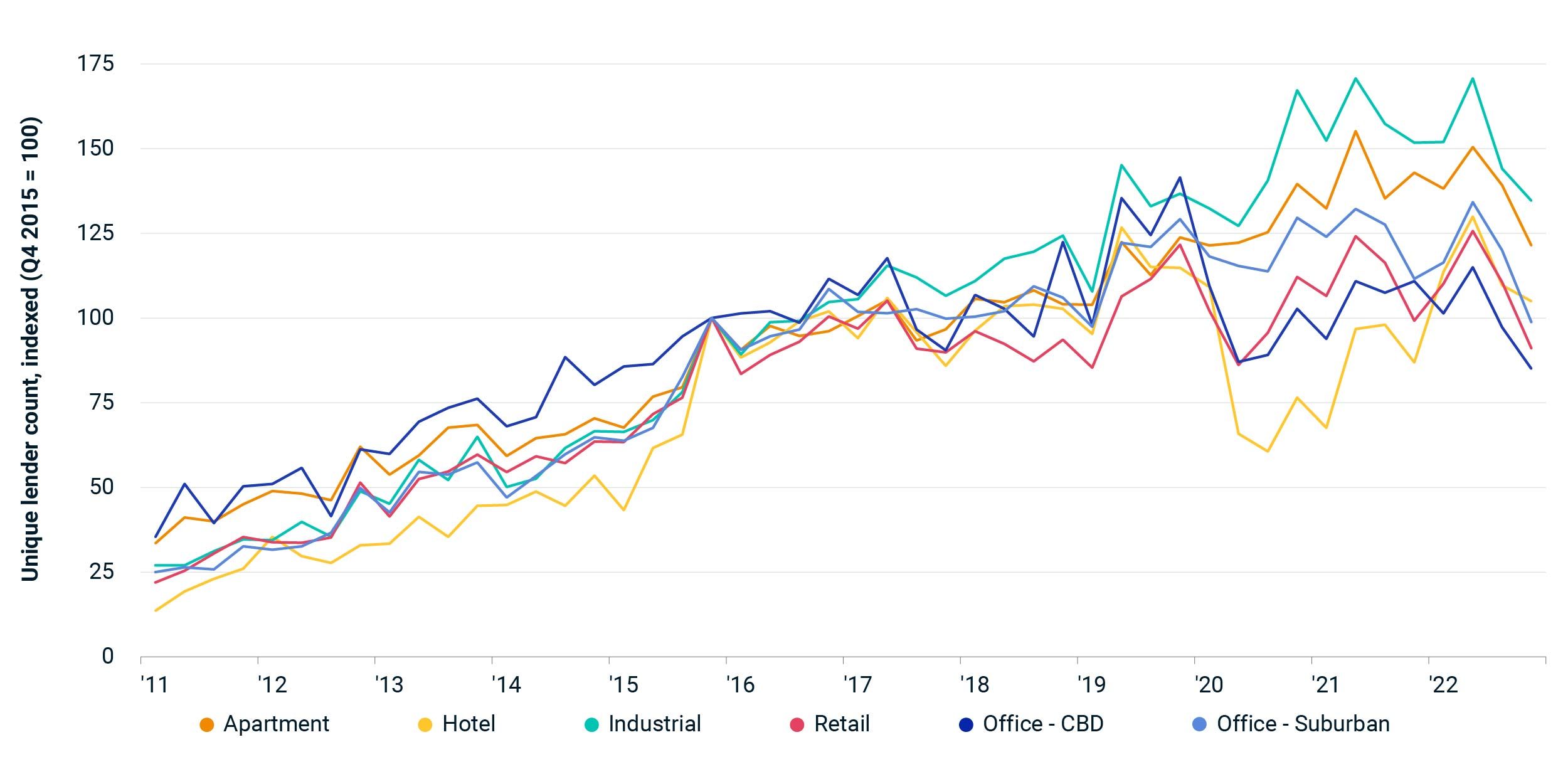Fewer Lenders Active in US Commercial Mortgages
The debt markets have come into sharp focus with the failures of Silicon Valley Bank and Signature Bank. The upheaval highlights a fluid situation as lenders come to grips with an environment of higher interest rates. Borrowers in the commercial real-estate market themselves have faced challenges, with higher mortgage costs repressing some investment activity. The increase in mortgage rates was partly a yield curve story but also one about competition, as there were fewer lenders originating new loans.
Across all property sectors, there were 7% fewer unique lenders active in the market in the fourth quarter of 2022 than in the final quarter of 2021. Some sectors showed a sharper decline: The size of the lender pool for apartment and industrial fell at double-digit rates. The hotel sector, by contrast, had a 21% increase in the number of active lenders, though this sector had been hit harder previously by the pandemic, causing many lenders to pull out.
The turmoil with the closure of New York-based Signature Bank may, in a microcosm, highlight the challenges that the market can face with fewer lenders active. Looking across loans originated for apartment assets in New York City in 2022, Signature was the second-largest lender.
Lender pool shrank across most US sectors in 2022

Subscribe todayto have insights delivered to your inbox.
Manhattan Office Redevelopment: Still Stuck on Pricing
There is talk in the market about converting offices to apartments, but sales for the purpose of redevelopment are still minimal.
Prices of US Commercial Property Tumbled in January
Prices of U.S. commercial property fell in January at an annual pace of decline not seen since late 2010, after the global financial crisis.
2023 Trends to Watch in Real Assets
Five critical insights to help you navigate challenges ahead.
The content of this page is for informational purposes only and is intended for institutional professionals with the analytical resources and tools necessary to interpret any performance information. Nothing herein is intended to recommend any product, tool or service. For all references to laws, rules or regulations, please note that the information is provided “as is” and does not constitute legal advice or any binding interpretation. Any approach to comply with regulatory or policy initiatives should be discussed with your own legal counsel and/or the relevant competent authority, as needed.
